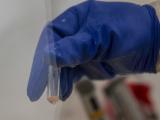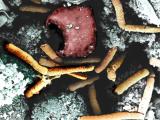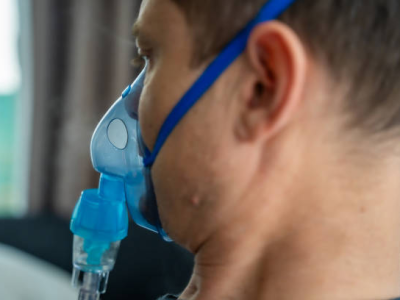Feb 28, 2006 (CIDRAP News) – Laboratory testing in the case of the New York City drum maker who recently contracted anthrax has supported the belief that he inhaled anthrax spores while working with contaminated animal hides, according to federal health officials.
The Centers for Disease Control and Prevention (CDC) said on Feb 24 that tests revealed Bacillus anthracis in the workplace, home, and van of the man, identified in news reports as Vado Diomande, 44. He fell ill with inhalational anthrax after performing in a concert in Mansfield, Pa., on Feb 16.
The test results "are consistent with the hypothesis that the patient's exposure occurred while working on contaminated hides while making traditional drums," the CDC said in a notice sent through its Health Alert Network.
Diomande, who has the first known US anthrax case since 2001, remains in serious condition in a Pennsylvania hospital, according to a New York Times report today. He was reported to have made drums from goat hides imported from Africa.
The Environmental Protection Agency planned to begin cleaning Diomande's Greenwich Village apartment and his studio near the Brooklyn waterfront this week, the Times reported yesterday. The agency intended to clean the apartment hallways and other common areas, plus other residents' apartments on request, the story said.
The Times also reported yesterday that testing had revealed no anthrax in an apartment in Crown Heights, Brooklyn, where a man worked on unprocessed hides obtained from Diomande.
The CDC said about two thirds of anthrax cases in the United States in recent decades were linked with handling animal hides or hair, but hides nonetheless pose little risk of causing anthrax.
Hides "pose a low risk of cutaneous [skin] anthrax, and an extremely low risk of inhalation anthrax," the agency said.
However, the industrial handling of large numbers of hides or of hair from many animals has been linked historically with an increased risk. Among 236 anthrax cases reported to the CDC from 1955 through 1999, 153 (65%) were tied to industrial handling of hides or hair, the CDC said. But only 9 of the 153 cases (6%) were inhalation anthrax, the most dangerous form.
"No cases of inhalation anthrax in the US have ever been associated with animal hide drums," the agency said. Diomande's exposure "occurred when he was making and finishing drums made from untanned animal hides, and was not associated with playing finished drums. His exposure was similar to that experienced during industrial handling of hides."
While the CDC does not recommend preventive treatment for people who have had contact with animal-hide drums, drum owners or players should report any unexplained fever or skin lesions to their healthcare provider, the agency said.
Diomande's illness worried parents of children attending a New York area school where he performed about a week before he got sick, according to a report in today's Journal News in White Plains, N.Y.
At a meeting last night, four doctors assured about 50 parents there was virtually no chance that their children would contract anthrax as a result of Diomande's performance at Hillside School in Hastings-on-Hudson, N.Y., the newspaper reported.
Ada Huang of the Westchester County Health Department said the drums Diomande used had been treated with chemicals that would kill anthrax spores. And School Superintendent John Russell said public health agencies would not test for anthrax at the school because there was next to no chance of finding any spores, according to the story.
However, some parents asked if the rooms where Diomande performed could be chemically decontaminated, and school board members said they would consider that, the report said.
The story said Diomande's dance troupe has traveled globally promoting the culture of Ivory Coast through chant, mime, dance, and music.
See also:


















